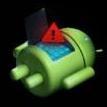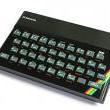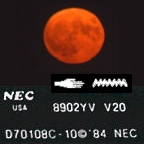Search the Community
Showing results for tags 'windows 7'.
-
I know these CPUs are not popular, let alone of people getting them and installing Windows 7 , but for any of you who might have core ultra cpu , how does win7 run ? I have heard that board manufacturers are removing CSM support , but not sure if this is true, and if so what brands would be removing it exactly .
-
When trying to install windows 7, I get to the install page and get to choose which drive, however, there is no drives to choose from. I've tried using support videos for this but none can help fix my solution. My specifications will be listed below. Aspire ES1-531 Windows 8.1 Processor - Intel® Pentium® Processor N3700 - Quad-core - 1.6 GHz / 2.4 GHz with Turbo Boost - 2 MB cache Memory (RAM) 4 GB (8 GB maximum installable RAM) Storage 1 TB HDD, 5400 rpm Please help thanks
- 12 replies
-
- support
- installation
-
(and 1 more)
Tagged with:
-
Anyone knows which are the system files (DLLs or EXEs) that are used to render the fonts and unicode-related things from Windows 8.1? Because those might have some functions inside that also render the Segoe UI Emoji font colored, and I want to apply that on Windows 7 or earlier operating systems. But if I just install the Segoe UI Emoji ttf file obtained from Windows 10 or 11, the emojis are only colored inside Firefox, but are black and white outside Firefox!
- 4 replies
-
1
-
- Unicode
- Windows 8.1
-
(and 3 more)
Tagged with:
-
Firefox Support on Windows 7/8.1 will end in 2023 By Martin Brinkman Nov 1, 2022 Updated • Nov 5, 2022 Read The Original Article Article From Ghacks
-
I've been working on updating windows 7 with as many updates as I can that are marked as 'importent' and have gotten every update thru windows update but how do I get the rest of the updates not listed in windows update? if anyone could help with this it would be much appreciated-legacyfan (I'm also on 64bit if that help)
-
I'm looking into different browser choices for windows 7 and chrome was what I found works best except that it can't be used above ver 109 so my question is has anyone gotten version of chrome above ver 109 working on windows 7? this has been a big research project for me and would like to know if anyone has found a solution yet to this problem-legacyfan
-
Laptop: Dell Latitude E6530 Intel Ivy Bridge, Core i5, HD 4000. 16GB of Ram Windows 7 with UEFI mode (No Basic Display Adapter) on 4TB SSD. Installation Media: Windows Vista x64 SP2 Updated to 2017 EOL (for Extended Kernel) formatted in Rufus with UEFI\GPT settings. Hi! I was wondering if anyone knows how to run Windows Vista SP2 with UEFI enabled on Intel Ivy Bridge Core i5? If so, what do I need to do, and how do I dual-boot it with Windows 7 when Windows 7 is installed first. The ISO has all the updates from Vista launch to its 2017 discontinuation. The Windows 7 installation on UEFI was made possible by deleting Basic Display Adapter after installing it through Mini Windows 10's DISM. UEFI is needed if I want to use the full 4TB SSD space. Any help on this is greatly appreciated! EDIT: I solved this issue. You can get Windows Vista working under UEFI (on devices that support Windows 8 and later such as Sandy/Ivy Bridge, Haswell, Broadwell, Skylake, etc) using UEFI7. Just replace the Windows 7 ISO with the Windows Vista updated to 2017 eol ISO (if you are using that ISO). Details on how to do this can be found here: https://vinaypundith.github.io/windows_7_efi_guide/
- 29 replies
-
- windows 7
- windows vista
-
(and 3 more)
Tagged with:
-
I will make custom Windows 7 installation in order to reduce time to install driver Anyone knows drivers pack for Windows 7 which include chipset or whatelse for earlier generation hardware (such Core) to later hardware (such Skylake) drivers? I don't care about the size because it will using USB drive as media instead DVD
- 2 replies
-
- windows 7
- drivers pack
-
(and 2 more)
Tagged with:
-
(Thread inspired by Dr. Flay's thread: https://forum.vivaldi.net/topic/38561/windows-7-old-games-failing-to-run) Ever since Games Explorer was introduced in Windows Vista, it has caused problems for users with limited access to the internet. Most affected users would have already disabled it by editing GameUX's registry settings or by unregistering the dll (GameUX.dll), but last month Microsoft has taken the domain the Games Explorer system used to phone for game-related metadata and updates out of commission (specifically: "https://games.metaservices.microsoft.com/games/SGamesWebService.asmx"), thus the problem will also show for users which have permanent connection to the internet. Symptoms related to this problem: Game fails to open, but their processes can be seen in the taskmgr The rundll32.exe process related to gameux.dll spikes up to >50% of CPU usage Running a second copy of the game or renaming the game executable works around it Any old game that has been added by Games Explorer itself is affected to this problem, since Windows is using the rundll32.exe process to check the game updates before launching the game. Note that you can't remove said games from Games Explorer itself, only hide it. Even changing the options within the Games Explorer to never check online for game updates and news won't fix this problem. The fix which tackles the problem at its core is to use these registry files provided by user UCyborg (Make sure to read the whole post!): The second fix (or rather a workaround) which is more simpler, but doesn't remove the problem at its core (less recommended than the first one): All you have to do is to open regedit, go to this key: HKEY_CLASSES_ROOT\Local Settings\Software\Microsoft\Windows\GameUX\ServiceLocation Changing the server address in the "Games" value to either '127.0.0.1', 'localhost' or '0.0.0.0' ought to fix it.
-
Hello all , first off , I'm a vivid Vista user . But sometimes I use Windows 7 for trying out some programmes . Right now I have a fresh install of Win 7 SP1 on my spare machine with Core Quad , it is not activated and absolutely clean from everything , except Audio/Video drivers . Something weird's going on , I can't delete executables . Process explorer says that they are locked by the system itself . The only way to delete an executable - close it's folder , wait for some time and delete this closed folder , without opening it again , otherwise it locks again. Tried switching Off defender , keeping only basic services , nothing helps . All help is really appreciated , thank you.
- 14 replies
-
- fresh install
- troubleshooting
-
(and 3 more)
Tagged with:
-
Windows 7 SP1 ESU Update Lists are no longer available for download, and this thread can be retired!
- 666 replies
-
21
-
MAKE SURE SECURE BOOT IS OFF WHICH IT PROBABLY IS IF YOU ARE READING THIS, ALSO MOST VISTA COMPATIBLE MACHINES LIKELY DONT SUPPORT UEFI This took a while to do here properly but I figured it out in the end. This works on an OptiPlex 390 using Vista SP2 x64 and a HDD in UEFI mode, booted from a UEFI+GPT USB (made from the original MSDN SP2 ISO and Rufus 3.5). For some reason it seems to bug out when trying to install even to a clean HDD. It’ll complain about being unable to boot from the device on your machine and then fail to create the partitions correctly with an error. There is a way around this and it’s fairly strange to me... which likely pinpoints it to being a problem with diskpart’s conversion system to GPT and the Vista SP2 installation environment: on the disk/partition selection, open a command prompt window (Shift+F10) and type the following: diskpart list disk select disk ü clean exit exit DON’T TYPE CONVERT GPT! IT SEEMS TO JUST COME UP THE ERRORS AGAIN, ALSO REPLACE ü WITH WHATEVER YOUR DISK IS OF COURSE Now exit the installation process and reboot the machine (don’t force it off, just let it reboot and then open the computer’s boot manager to boot into the Vista USB. When you get to the disk select screen just press next and it works fine from there. Wait a while and it should eventually get you to the OOBE. Once you’re booted into the desktop tap Windows+R and open diskmgmt.msc, confirm the UAC prompt and right click your C drive’s properties to confirm it is using a GUID partition table If everything worked, enjoy! Some older boards supporting UEFI if they exist may want you to specify an EFI boot file, or if for some reason the entry isn’t made during the installation. Remember this is an EOL OS. Take obvious caution and read up on the subject as necessary, and don’t refrain from asking around/searching the community for help if you’re not entirely versed Note: While I wrote this for Vista it will work on W7 too the same way
-
Microsoft relesed preview builds from the Microsoft Edge Canary channel available on Windows 7, Windows 8, and Windows 8.1. This rounds out the initial set of platforms that Microsoft began to roll out back in April, so developers and users alike can try out the next version of Microsoft Edge on every major desktop platform. Microsoft Edge preview builds for Windows 7, Windows 8, and Windows 8.1
- 1 reply
-
- Windows 8.1
- windows 8
-
(and 2 more)
Tagged with:
-
Hi, I want to make an Windows 7 Multi language ISO file but I don't know how to do it. Can you tell me tutorial ?
-
Why Windows Vista isn't bad Windows Vista: it's the OS everyone loves to hate. Still today, several years later, I see it being criticized for having high system requirements and being a memory hog. But is it really that bad? I think not. In this article I am going to explain why I believe Windows Vista deserves more respect and really isn't bad, and hopefully convince some of you XP and Windows 7 fans that Vista is a very viable OS, especially by today's standards. So let's begin. Windows Vista, when released, introduced a completely different and totally new kernel and driver model than that of its predecessor, Windows XP. Introducing a new kernel caused compatibility issues with legacy applications, and an entire new driver model caused a number of driver compatibility problems. I'll admit, Windows Vista truly wasn't ready when it was released in its RTM version, as it still caused heavy disk I/O which drastically decreased the life of hard drives and degraded performance. There were also issues with OEMs, that hadn't yet released drivers for Vista or released drivers that didn't work well with the new driver model, and OEMs forced Vista onto hardware that barely met the system requirements for Windows Vista. They also stuffed it full of OEM bloatware which caused it to be even slower for users. However, in this article I'm going to explain how those problems were fixed and are now non-existent in Windows Vista. The Rise of Vista: Service Pack 1 released In 2008 with the release of Vista SP1, tons of issues were resolved, and speed was greatly improved. Some improvements made in Service Pack 1 were: Faster copy times, heavy disk activity was toned down dramatically, and tons of apps and drivers had finally caught up with Vista, but there were still some issues. Vista, even with SP1, was still lackluster and needed some work, to hopefully get people off Windows XP for good. There was still the slow boot up and shut down time, as well as a few instability issues. But soon, Microsoft was going to fix that in its next Service Pack for Windows Vista. Vista at its peak: Service Pack 2 released With the release of Service Pack 2 in April 2009, Vista was finally what I would call ready, and Microsoft had managed to finally advance the OS far ahead of Windows XP. Improvements in Service Pack 2 were: even faster file copy times, boot up time improved dramatically, stability greatly improved, memory (RAM) usage was toned down, UAC was refined to be less annoying (while keeping the OS secure), and support for newer types of hardware was added, including support for blue-ray discs. At this stage, Windows Vista was, in my opinion, a worthy successor to Windows XP, and was almost perfect. However, the hate still raged on in most people's minds. Why people still hate Windows Vista Vista is still hated by the majority today, and I believe I know why. Early adopters that tried Vista didn't give it a second chance. They tried it once, either hated it or loved it, and never looked back at it again. So they just hopped back to the trusty old Windows XP and waited for the next version of Windows to arrive, that being Windows 7. Despite service packs improving the OS, people still didn't give Vista another chance, and forever concluded in their minds that it was a failure. I've also had people tell me that they hate Vista because they "heard bad things about it". And a lot of people just jumped on the Vista hating bandwagon without even trying it, which in my opinion, isn't a smart thing to do. Why Windows Vista deserves more respect Windows Vista introduced many new technologies that are critical to Windows 7's existence. Some people may not realize this, but Windows Vista was critical to Windows 7's success. Had Windows 7 in its form today been released instead of Vista, Windows 7 would've received criticism for the same reasons as Windows Vista. It also had high system requirements (identical to Windows Vista's in fact) compared with XP, and it retained a similar kernel (only slightly refined from Vista) and an almost identical driver model introduced by Windows Vista, which makes it a complete departure from Windows XP as well. Compatibility issues would've existed, and Windows 7 would've been installed on underpowered hardware, just as Vista was, and users would've complained about slowness, and jumped back to XP, just as they did with Vista; which is why I believe Vista deserves more respect. Why Windows Vista is much better than Windows XP Some people might have trouble swallowing this, but Windows Vista truly is a large step up from Windows XP, in many ways. One large criticism of Windows XP was security, and despite Microsoft improving the security by releasing Service Pack 2 for XP in 2004, Vista really abolished that problem at a much higher level. With a stronger Windows Firewall and User Account Control that was refined over time to be less annoying with updates, Windows Vista is much more secure than Windows XP. Windows Vista is also better optimized for modern hardware, and takes better advantage of multi-core processors than Windows XP, and has a full-fledged 64 bit version. XP had a 64 bit version, but it was based on its server counterpart, Windows Server 2003, which caused compatibility issues and was not widely adopted. Windows Vista also has more secure networking, and with Service Pack 1, tests showed Windows Vista outperformed Windows XP in the file copying area, just as Microsoft had claimed to improve with the update. Windows Vista also introduced DirectX 10, which delivered much richer gaming graphics and better performance than DirectX 9.0c which was the last version available for Windows XP. Windows Vista also introduced support for USB 3.0, which was much faster and more efficient than USB 2.0 that was available on Windows XP. Although, most USB 3.0 devices will still work—in a technical sense—with Windows XP because they’re backward-compatible. However, they will fall back to USB 2.0 compatibility and transfer data at about one-tenth of the potential speed of USB 3.0. Also, Windows Vista introduced a much faster, more efficient, and more convenient search. Open any explorer window or open the start menu in Vista, and there's most likely search present there. In Windows XP, all you have out of the box is the classic search from previous versions of Windows. And although it works, it's still not as convenient or as efficient as it is in Windows Vista, because you only have it all in one place, rather than throughout the system like in Windows Vista. Although it really wasn't necessary, Windows Vista introduced a very elegant desktop composition engine known as Windows Aero, which looked, to me anyways, much more appealing than the Luna interface that was in Windows XP. And it was refined to be less resource intensive with Service Pack 2. Windows Vista: a viable choice for many, even today Windows Vista was truly ahead of its time, and by today's standards, it still pretty much meets everything most people would want from an operating system. It's very similar to Windows 7. It works well on modern hardware, as it's optimized for multi-core processors, and works with most of the latest third party software. And it also supports 64 bit computing very well, just as well as Windows 7 in fact. And much better than Windows XP did. I'm not saying we should all just switch to Windows Vista, but if you're still using Windows XP, upgrading to Vista with Service Pack 2 wouldn't at all be a bad idea if your hardware can handle it. Conclusion Well I'll leave you with this, and I hope I helped some of you realize why Windows Vista was really a misunderstood operating system. Today, Windows Vista is much better than it was in its infancy, and is no longer "crap" like people have claimed that it is. As long as you run it on compatible hardware and keep it up to date, it will run just fine. In fact, I use Vista (or server 2008 as a workstation rather, the same as vista pretty much) as my main OS, and it runs just fine. And I don't understand that if someone that likes Windows 7 tried Vista today with Service Pack 2 installed on modern hardware, how they could still hate it- but that's just my take on this. If you know why please explain. Thanks very much for reading! -2008WindowsVista
- 82 replies
-
8
-
- Windows Vista
- Windows XP
-
(and 2 more)
Tagged with:
-
I have several computers with W7 in which I finish receiving updates on January 14, 2020. They can not update to W8 or W10 since they are Pentium 4 and the processor does not have the NX bit. Although there are still 2 years left, I am thinking if it is possible to install one of the following to extend the period of updates: Windows 7 Embedded Standard SP1 = October 13, 2020 Windows Embedded POSReady 7 = October 12, 2021 Would it be possible to install it on top or should a clean installation be done?
-
Does anyone know you can, or know where i can find the relevant i for customizing the partitioning part of the Windows 7 installer I cant find any info on this part of the setup process, does it use a diskpart script in the background or is it a custom partitioning built i to the setup and such? The main reasons i want to play around with it: i want to be able to customise it so i can potentially optimise it better (if it is doable i imagine it would be the same process in the win 10 installer, since it’s seems to be based on the same code and the default win10 boot partitions are done badly and it would save me manually diskparting them later) Plus i plan on doing some windows xp installs in wim format to install via the win 7 installer And win xp requires some specific parameters for the partitioning Any info is welcome, thanks
- 1 reply
-
- diskpart
- partitioning
-
(and 3 more)
Tagged with:
-
Did anyone succeed to install Windows 7 from USB 3.0? Because I have integrated the drivers in boot.wim and install.wim, but I always get the same error (missing driver). I also tried to load them from a folder or to install in UEFI mode ... no way! It's quite frustrating...
-
Hi, i'm stuck at something that's been working fine before... Is there any changes to the latest win 7 version regarding userprofile relocation? I'm following this guide to relocate programdata and userprofile https://www.sevenforums.com/tutorials/124198-user-profiles-create-move-during-windows-7-installation.html But after restarting nothing changes, here's my xml <?xml version="1.0" encoding="utf-8"?> <unattend xmlns="urn:schemas-microsoft-com:unattend"> <settings pass="oobeSystem"> <component name="Microsoft-Windows-Shell-Setup" processorArchitecture="amd64" publicKeyToken="31bf3856ad364e35" language="neutral" versionScope="nonSxS" xmlns:wcm="http://schemas.microsoft.com/WMIConfig/2002/State" xmlns:xsi="http://www.w3.org/2001/XMLSchema-instance"> <FolderLocations> <ProfilesDirectory>d:\User</ProfilesDirectory> <ProgramData>d:\ProgramData</ProgramData> </FolderLocations> </component> </settings> <cpi:offlineImage cpi:source="wim:E:/sources/install.wim#Windows 7 ULTIMATE" xmlns:cpi="urn:schemas-microsoft-com:cpi" /> </unattend> Dont see anything strange on Logfile either : https://drive.google.com/open?id=0B9f9Hk9Slq0Wb0ZDMUtqNzhEWkU Here's the DISM cmd result : Deployment Image Servicing and Management tool Version: 10.0.14393.0 Details for image : G:\sources\install.esd Index : 1 Name : Windows 7 ULTIMATE x64 Description : Windows 7 ULTIMATE Size : 16,966,825,417 bytes WIM Bootable : No Architecture : x64 Hal : acpiapic Version : 6.1.7601 ServicePack Build : 23889 ServicePack Level : 1 Edition : Ultimate Installation : Client ProductType : WinNT ProductSuite : Terminal Server System Root : WINDOWS Directories : 19180 Files : 92447 Created : 11/21/2010 - 11:39:25 AM Modified : 9/18/2017 - 3:12:07 PM Languages : en-US (Default) The operation completed successfully. What i've tried : - changing .wim to .esd in xml file since the iso seems to be using .esd - stopping and disabling windows media search network service The only error i could spot is: [0x0f0043] SYSPRP WinMain:The sysprep dialog box returned FALSE Any idea how to solve this?
-
- windows 7
- userprofile
-
(and 1 more)
Tagged with:
-
Well, the issue reported on Graphics Bug in Windows 7 after installing August 2017 Security Updates, and also by Woody, rather unsurprisingly, also occurs on XP SP3... It only affects those using more than one monitor, and req monitors to be setup in such a way that certain parts of the screen have negative screen positions. For example a secondary monitor setup to the left of the main monitor, or with a higher top border than the main monitor, or both (which is the case of one of my machines). Then the secondary monitor starts acting up. Solution? None, yet, for XP. Workaround: uninstall KB4035055. By doing that the latest win32k.sys (v. 5.1.2600.7312) will be replaced by v. 5.1.2600.7297 (from KB4025877). This issue only happens in the conditions described, everybody using a single monitor, and people using more than one monitor in unaffected spatial arrangementes may safely ignore it and keep the latest win32k,sys! HTH
- 5 replies
-
1
-
- Windows 7
- Dual Monitor
-
(and 3 more)
Tagged with:
-
Hello! I've recently downgraded from Windows 10 to Windows 7 (Server 2008 R2) and one thing annoys me a little. Window animations are not super-smooth. Vista, 8, 8.1 and 10 have VERY smooth window-opening animation, but not 7 I've been looking through registry editor and didn't find anything related to it. Is it even possible to enable "super-smooth" animations in Windows 7? And I don't want to completely disable animations.
- 2 replies
-
- Smooth
- animations
-
(and 3 more)
Tagged with:
-
I need some assistance and I hope somebody can assist me. I cloned two hard drives via clonezilla because one of those hard drives has bad sectors. I have Windows 7 64 bit. The original hard drives still work even though one of them has the bad sectors. The cloned hard drives will not boot. I get the message error File: \Boot\BCD Status: 0xc000000f Info: An error occurred while trying to read the boot configuration data. I attempted some solutions that I saw on a few other threads; but, I have had no success. The system recovery options shows. Operating System: Windows7 Partition size: 0 Location: (D:) Local Disk The recovery disc did not resolve the boot error. I have checked the bios for boot start up and it's correct. I followed instructions via another website and noticed a partition is listed a Raw. I tried to convert the Raw partition to NTFS. I followed instructions which were via command prompt - Diskpart that showed D as a raw file. I attempted Chkdsk /r /f d: But I got the message ... the type of file NTFS. Unable to determine volume version and state. Chkdsk aborted. Failed to transfer logged messages to the event log with status 50. Having read many threads it seems that I need to convert the Raw partition to NTFS. The old drives are a WD 1 TB and a 500G Samsung Sata II The two new drives are WD HDD 1 TB WD Black 7200RPM contain the following: A terabyte drive partioned :C drive and :E drive and a 450MB recovery partition The second terabyte drive has the D drive Any assistance would be greatly appreciated. Sorry for post being so long. I was trying to be as detailed as possible. Thanks in advance.
-
I need help here! I recently did a in-place upgrade from Windows Vista Ultimate SP2 x64 to Windows 7 Ultimate SP1 x64 (I didn't realise that the 64-bit version of Windows 7 Ultimate had SP1 integrated to begin with). I had a lot of trouble getting some of the hardware such as network card and USB 3.0 ports working under Windows 7 and I managed to get things sorted out most of the way. However, when I attempt to activate Windows 7 over the internet, I received a error code 0xC004C003 meaning that one of the product keys that I used has been blocked by Microsoft. Microsoft Geniune Advantage Diagnostics Tool has determined that the product ID is 070 and the validation code is 0. I know that product IDs that are 064, 065, 066, 067, 068 and 069 have all had their product keys blocked by Microsoft and I'm really lucky to find that my copy is not on the block list. Should I post a copy of the validation info that the MGA Diagnostic Tool provided me? I only have until 24 January 2017 to active Windows 7 or I end up in reduced functionality mode! After going through the upgrade process from Windows Vista Ultimate to Windows 7 Ultimate using the Full Purchase Product, should I contact Microsoft over the phone to see if this can be resolved? Thank you and Happy Holidays!
-
Hi. I bought a Toshiba Satellite C655 6 years ago. Recently, I did a system recovery of the computer. It installed the windows 7 and many try out software. I did not like these 'extra' software. So I downloaded an windows 7 home premium from bit-torrent site, and installed on my computer. It did not require product key while in installing. But after the installation, a message came out "Window is not genuine", I tried to put my product key from my Toshiba sticker, but it did not work. Is there a way to 'activate' the 'clean' version of the windows 7? Or, I have to go back to the 'bloated' original window 7 version? Thanks for help. Dan
-
Hi, Today I have realized I cannot create zip folder from right-click context menu anymore. Don't know for how long it lasts, but my personal guess is yesterday (since I did update 7-zip and it might have broken something). Tried to fix it using autoruns (found nothing interesting) and Default Program Control Panel settings (where .zip ain't even listed). From what I got to know, it's connected to %windir%/system32/zipfldr.dll, which itself is functional, since I can operate .zip with drag and drop or Send to menu. I guess it is a case of a single registry key, but I cant localize it... way too many of them. I'd be glad for any help. Thanks.









